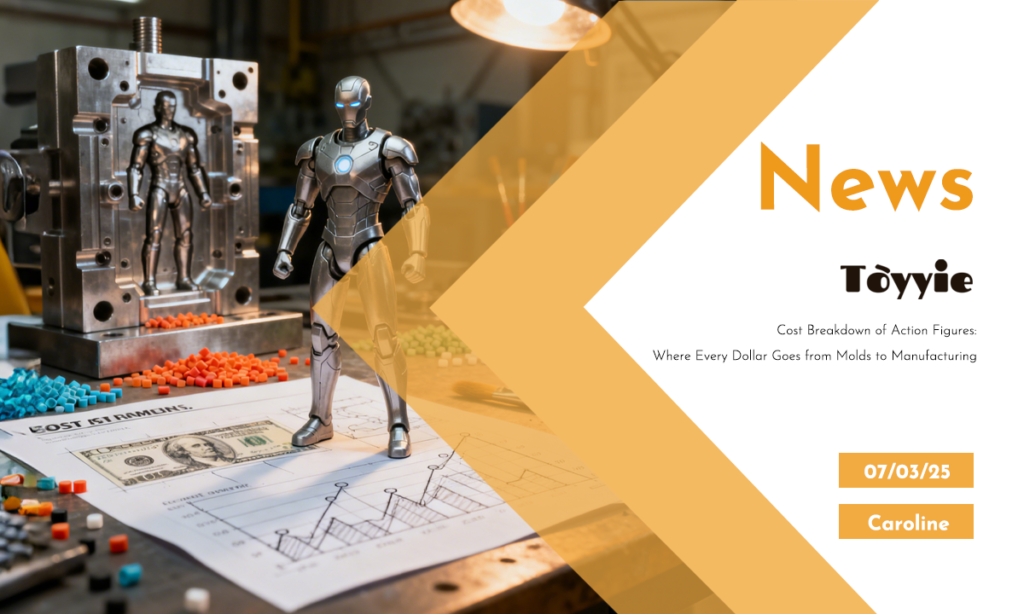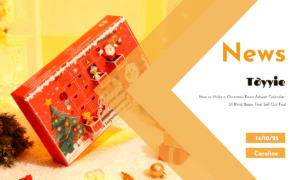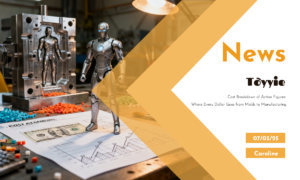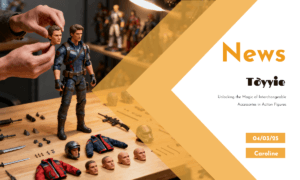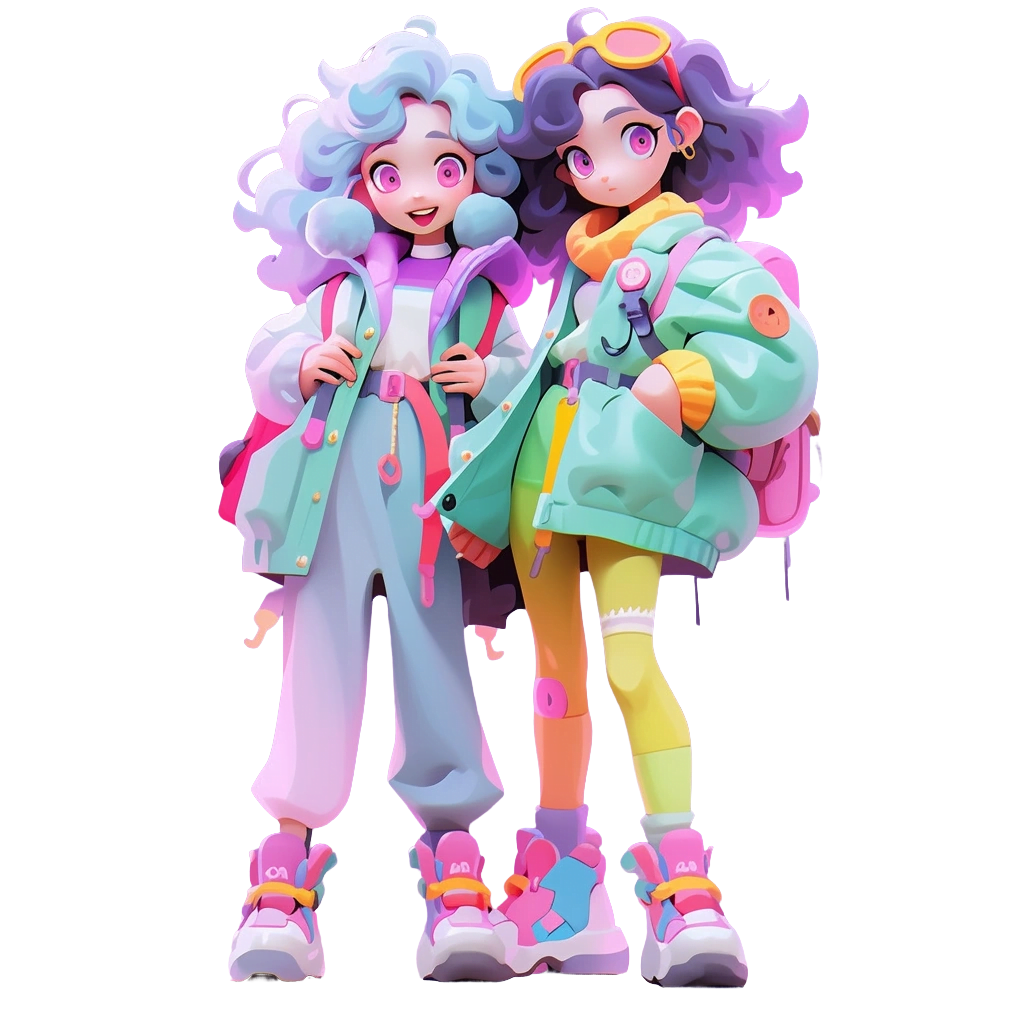📌 Introduction📌
When you first glance at a beautifully crafted action figure on a collector’s shelf, it’s easy to marvel at its intricate details and lifelike design. But behind that polished exterior lies a complex web of costs—costs that determine not only the final price tag but also the feasibility of bringing such a product to market. As someone who has spent years navigating the ins and outs of toy manufacturing, I can tell you that understanding these costs is crucial for anyone involved in the creation or purchase of action figures. It’s not just about the numbers; it’s about appreciating the craftsmanship, the materials, and the processes that transform an idea into a tangible piece of art.
Every time I sit down with a client or a colleague to discuss the pricing of an action figure, I find myself diving deep into this intricate cost structure. From the initial mold creation to the final packaging, every step carries its own set of expenses. These costs are not arbitrary—they reflect the quality, complexity, and labor that go into producing each figure. And while some might see the price tag as just another number, I see it as a story—a narrative of decisions made, resources allocated, and challenges overcome.
Let me take you back to one of my earliest projects in the industry. We were tasked with creating a limited-edition action figure based on a popular movie character. At first glance, it seemed straightforward: design the figure, produce it, and ship it out. But as we delved deeper into the process, the true complexity of the costs became apparent. The initial mold alone was a significant investment, requiring precision engineering and high-quality materials to ensure durability. Then came the assembly line, where skilled artisans meticulously painted each detail by hand, adding hours of labor to each unit. Finally, there was the packaging—a seemingly minor detail, but one that could make or break the customer’s unboxing experience.
This project taught me a valuable lesson: the cost of an action figure is not just a reflection of its physical components but also the effort and expertise required to bring it to life. Each decision—from the type of plastic used to the intricacy of the paint job—has a direct impact on the final price. And while some costs might seem negligible on their own, they quickly add up when multiplied across thousands of units.
Understanding these costs is especially important for collectors and enthusiasts who want to know why their favorite figures come with certain price tags. It’s not just about the brand name or the character’s popularity—it’s about the craftsmanship and care that go into every step of the production process. For manufacturers like us, transparency in pricing is key to building trust with our customers. By breaking down the costs and explaining where every penny goes, we can help clients make informed decisions and appreciate the value of what they’re purchasing.
In this article, I’ll walk you through the various components of action figure production costs, from mold creation to assembly and beyond. Drawing on my experiences in the industry, I’ll share insights into how each element contributes to the overall expense and why these costs matter. Whether you’re a designer looking to optimize your budget, a collector curious about the economics of your favorite figures, or simply someone interested in the art of toy manufacturing, I hope this guide will provide clarity and appreciation for the intricate world of action figure costs.
💰 Breaking Down the Costs: From Mold Creation to Final Assembly
To truly understand the cost structure of an action figure, we need to dissect each phase of the production process. Every step, from the initial mold creation to the final assembly, carries its own set of expenses that contribute to the overall price. Let me walk you through these phases, sharing insights from my own experiences and shedding light on the factors that influence these costs.
1️⃣ Mold Creation: The Foundation of Precision
The journey begins with mold creation, which is arguably the most critical and expensive part of the process. A mold is essentially the blueprint for your action figure—it defines the shape, size, and details of the final product. High-quality molds are essential for achieving consistency and durability, especially when producing large quantities. In my early days in the industry, I remember working on a project where the mold quality wasn’t up to par. The result? Figures with uneven surfaces and misaligned joints, leading to costly rework and delays. Since then, I’ve learned that investing in precision-engineered molds is non-negotiable.
Mold creation typically involves CNC machining or 3D printing, depending on the complexity of the design. For highly detailed figures, CNC machining is often preferred because it offers superior accuracy. However, this comes at a premium cost. A single mold can range anywhere from $5,000 to $20,000, depending on the size and intricacy of the figure. And if the design requires multiple parts (like interchangeable heads or accessories), each component will need its own mold, further increasing the expense.
2️⃣ Material Selection: Balancing Quality and Cost
Once the mold is ready, the next major cost driver is material selection. The type of plastic used can significantly impact both the appearance and durability of the action figure. Common materials include ABS (Acrylonitrile Butadiene Styrene) and PVC (Polyvinyl Chloride), each with its own advantages and drawbacks.
ABS is known for its strength and rigidity, making it ideal for figures that require structural integrity. However, it tends to be more expensive than PVC, which is softer and more flexible but may degrade over time. Early in my career, I worked on a project where we opted for cheaper PVC to cut costs. While it saved money upfront, the figures began showing signs of wear much sooner than expected, leading to customer complaints. This taught me that skimping on materials can have long-term consequences, both financially and reputationally.
Beyond the base material, additional costs arise from additives like colorants, stabilizers, and UV protectants. These elements enhance the figure’s visual appeal and longevity but add to the overall expense. For example, metallic finishes or translucent effects require specialized pigments that can increase material costs by 20-30%.
3️⃣ Assembly: Where Craftsmanship Meets Labor
After the raw materials are molded, the assembly phase begins. This is where the figure starts to take shape, with each component being carefully assembled and painted. Labor costs here can vary widely depending on the level of detail required. For mass-produced figures, automated assembly lines are often used to reduce costs. However, for high-end collectibles, much of the work is still done by hand.
I vividly recall a project involving a limited-edition superhero figure. The client insisted on hand-painted details for the armor and facial features. While this added a premium feel to the product, it also meant higher labor costs. Each figure required several hours of meticulous painting, driving up the per-unit cost significantly. On the flip side, using decals or pre-printed stickers can reduce labor expenses but may compromise the figure’s authenticity and appeal.
Another factor to consider is the complexity of articulation points. Figures with multiple joints and movable parts require precise assembly to ensure smooth movement without compromising structural integrity. This often involves additional steps like inserting metal pins or screws, which adds to both labor and material costs.
4️⃣ Packaging: The Final Touch
While packaging might seem like an afterthought, it plays a crucial role in the overall cost—and customer experience. A well-designed package not only protects the figure during shipping but also enhances its perceived value. Collectors often judge a product by its unboxing experience, so investing in high-quality packaging can pay dividends.
From my experience, packaging costs can range from $1 to $5 per unit, depending on the materials and design. Simple blister packs are cost-effective but may not appeal to premium collectors, who expect window boxes or custom inserts. Adding features like magnetic closures or embossed logos can elevate the package’s aesthetic but also drive up expenses.
5️⃣ Overhead and Miscellaneous Costs
Finally, there are the overhead costs that often get overlooked but are essential to the production process. These include facility maintenance, utilities, equipment depreciation, and administrative expenses. While these costs are spread across all units produced, they still contribute to the final price.
For example, maintaining a cleanroom environment for painting delicate details can be expensive due to the need for specialized air filtration systems. Similarly, regular calibration of machinery ensures consistent quality but adds to operational expenses. These “hidden” costs might not be immediately visible, but they are integral to delivering a high-quality product.
By breaking down the costs in this way, it becomes clear that producing an action figure is far more complex than meets the eye. Each phase—from mold creation to packaging—carries its own set of challenges and expenses. Understanding these factors not only helps manufacturers optimize their budgets but also allows collectors to appreciate the craftsmanship behind their favorite figures. In the following sections, I’ll delve deeper into specific cost drivers and share strategies for managing them effectively.
🕵️ The Hidden Costs Behind the Scenes: Beyond Materials and Labor
When discussing the cost of producing action figures, many people focus primarily on the obvious expenses—materials, labor, and perhaps packaging. However, there’s a whole layer of hidden costs that often go unnoticed but play a pivotal role in determining the final price. These costs are not always visible on the surface, yet they can significantly impact the overall budget and the quality of the final product. From my years in the toy manufacturing industry, I’ve learned that overlooking these hidden expenses can lead to unexpected setbacks, budget overruns, and even compromises in product quality. Let me walk you through some of these lesser-known costs and explain why they matter.
1️⃣ Quality Control: Ensuring Perfection at Every Step
One of the most critical yet underappreciated aspects of action figure production is quality control. While it might seem like a straightforward process, ensuring that every figure meets the highest standards requires meticulous attention to detail and significant resources. During my tenure at a mid-sized toy manufacturer, we once faced a crisis where a batch of figures had inconsistent paint jobs due to a malfunctioning spray gun. The defect wasn’t caught until the products reached retailers, resulting in costly recalls and damaged reputations. That incident underscored the importance of robust quality control measures throughout the production process.
Implementing a comprehensive quality assurance system involves multiple layers of inspection—from raw material checks to in-process evaluations and final audits before packaging. Each of these steps requires trained personnel, specialized equipment, and time. For instance, using advanced imaging technology to detect microscopic defects can add to the overhead, but it ensures that issues are identified early, preventing larger problems down the line. Additionally, maintaining a culture of accountability within the team—where workers are encouraged to report potential flaws—can prevent small errors from escalating into major issues. While these measures may seem like extra costs, they ultimately save money by reducing waste, minimizing returns, and preserving brand integrity.
2️⃣ Tool Maintenance and Equipment Upkeep: Keeping the Machines Running
Another hidden cost that often flies under the radar is tool maintenance and equipment upkeep. The machinery used in action figure production—whether it’s injection molding machines, CNC routers, or robotic arms—requires regular servicing to function optimally. Neglecting this aspect can lead to breakdowns, production delays, and even defective products. I remember a project where a critical machine broke down midway through production due to lack of routine maintenance. Not only did we lose precious time waiting for repairs, but the downtime also disrupted the entire assembly line, causing ripple effects across other projects.
Investing in preventive maintenance might seem like an unnecessary expense at first glance, but it pays off in the long run. Regular calibration of tools ensures precision, while timely replacement of worn-out parts prevents catastrophic failures. Moreover, upgrading outdated equipment to more energy-efficient models can reduce utility costs and improve productivity. For example, switching to a newer generation of injection molding machines not only increased our output capacity but also lowered electricity consumption by 15%. These savings, though incremental, accumulate over time and contribute to a healthier bottom line.
3️⃣ Waste Management and Environmental Compliance: Doing Our Part
In today’s environmentally conscious world, waste management and compliance with environmental regulations have become increasingly important—and costly. Producing action figures generates waste in the form of excess plastic, defective units, and packaging materials. Proper disposal and recycling of these materials require careful planning and investment. Early in my career, I worked with a company that underestimated the importance of sustainable practices. They ended up facing hefty fines for improper disposal of industrial waste, which not only strained finances but also tarnished their public image.
To mitigate these risks, we now implement eco-friendly initiatives such as using biodegradable packaging, recycling scrap materials, and adopting lean manufacturing principles to minimize waste. While these efforts do come with upfront costs, they align with consumer expectations and regulatory requirements, ultimately enhancing brand loyalty and market competitiveness. Plus, investing in sustainability can open doors to new opportunities, such as partnerships with eco-conscious retailers or certifications that boost credibility.
4️⃣ Logistics and Supply Chain Management: Navigating Complexity
The logistics of transporting raw materials, moving products between facilities, and delivering finished goods to retailers or customers is another area where hidden costs lurk. Supply chain disruptions, fluctuating fuel prices, and customs duties can all inflate expenses unexpectedly. During the pandemic, I witnessed firsthand how global supply chain bottlenecks caused delays in receiving essential components, forcing us to source alternatives at higher costs. This experience highlighted the importance of building resilient supply chains and maintaining strong relationships with suppliers.
To manage these risks, we’ve adopted strategies such as diversifying suppliers, stockpiling critical materials, and leveraging technology for real-time tracking of shipments. While these measures require initial investments, they provide stability and flexibility, allowing us to adapt to changing circumstances without compromising quality or timelines.
These hidden costs—quality control, tool maintenance, waste management, and logistics—are integral to the success of any action figure production. Ignoring them can lead to inefficiencies, financial strain, and reputational damage. By acknowledging and addressing these factors proactively, manufacturers can not only optimize their operations but also deliver products that meet the highest standards of excellence. As we continue exploring the intricacies of action figure costs, keep in mind that every penny spent behind the scenes contributes to the value and integrity of the final product.
💡 Explaining the Price Tag: How Costs Translate into Value
As we’ve explored the intricate layers of action figure production costs—from mold creation and material selection to hidden expenses like quality control and logistics—it’s time to address the ultimate question: Why does an action figure cost what it does? To answer this, we need to connect the dots between the various cost components and the final retail price. From my experience in the industry, I’ve found that understanding this relationship not only helps manufacturers justify their pricing but also empowers collectors to appreciate the true value of their purchases.
1️⃣ Breaking Down the Numbers: A Hypothetical Example
Let’s start by examining a hypothetical scenario to illustrate how costs translate into the final price. Imagine we’re producing a mid-range action figure priced at $50. Here’s how the costs might break down:
- Mold Creation: $10,000 for a single mold, amortized across 10,000 units = $1 per unit.
- Materials:High-quality ABS plastic and specialized pigments = $5 per unit.
- Labor:Skilled artisans for assembly and hand-painting = $10 per unit.
- Packaging:Premium window box with custom inserts = $3 per unit.
- Quality Control:Multi-tiered inspections and testing = $2 per unit.
- Overhead:Facility maintenance, utilities, and equipment depreciation = $4 per unit.
- Logistics:Shipping, warehousing, and distribution = $3 per unit.
- Profit Margin:$12 per unit (to cover marketing, R&D, and reinvestment).
Adding these up, we arrive at a total production cost of $38 per unit. With a profit margin of $12, the final retail price becomes $50. While this is a simplified example, it demonstrates how each cost component contributes to the overall price.
2️⃣ Justifying the Price: Transparency Builds Trust
One of the biggest challenges in the toy manufacturing industry is justifying the price to clients and consumers. Many collectors assume that a $50 action figure should cost significantly less to produce, given the relatively small size and perceived simplicity. However, as we’ve seen, the reality is far more complex. Transparent communication about these costs is key to building trust and fostering a deeper appreciation for the product.
Early in my career, I worked with a client who was skeptical about the pricing of a limited-edition figure. They argued that the materials and labor couldn’t possibly justify the cost. To address their concerns, I walked them through the entire production process, breaking down each expense and explaining the rationale behind our decisions. By the end of the discussion, they not only understood the pricing but also appreciated the craftsmanship and effort that went into the figure. This experience reinforced the importance of transparency in pricing.
3️⃣ Value Beyond the Price Tag: The Intangible Benefits
While the numbers provide a clear picture of the costs, it’s equally important to highlight the intangible benefits that justify the price. For collectors, an action figure is more than just a toy—it’s a piece of art, a representation of their passion, and sometimes even an investment. High-quality materials, intricate details, and thoughtful design elevate the figure from a mere product to a cherished collectible.
I recall a project where we produced a highly detailed action figure of a beloved sci-fi character. Despite its premium price, it sold out within days of release. When I spoke with buyers, they emphasized the figure’s exceptional craftsmanship and attention to detail as the primary reasons for their purchase. For them, the price was a reflection of the value they received—not just in terms of the physical product but also the emotional connection it provided.
4️⃣ Balancing Cost and Value: Strategies for Manufacturers
For manufacturers, striking the right balance between cost and value is crucial. Overpricing can alienate customers, while underpricing can undermine profitability and brand perception. One effective strategy is to offer tiered pricing based on the level of detail and exclusivity. For example, a basic version of a figure might use simpler materials and automated assembly, while a premium version could feature hand-painted details and limited-edition packaging. This approach caters to different segments of the market, maximizing both accessibility and profitability.
Additionally, bundling accessories or offering exclusive bonuses can enhance perceived value without significantly increasing production costs. During a recent project, we included a custom display stand and a certificate of authenticity with a limited-edition figure. These small additions barely impacted the overall cost but greatly enhanced the customer’s unboxing experience and satisfaction.
5️⃣ Empowering Consumers: Educating the Market
Ultimately, the goal is to empower consumers with knowledge. By educating them about the intricacies of action figure production, we can shift the conversation from “Why is it so expensive?” to “Wow, I understand why it’s worth it.” Sharing behind-the-scenes content, such as videos of the production process or interviews with designers and artisans, can create a deeper connection between the brand and its audience. I’ve seen firsthand how this transparency fosters loyalty and enthusiasm among collectors, turning casual buyers into lifelong fans.
In conclusion, the price of an action figure is more than just a number—it’s a reflection of the craftsmanship, effort, and expertise that go into every step of the production process. By breaking down the costs and explaining their significance, we can bridge the gap between manufacturers and consumers, fostering mutual understanding and appreciation. Whether you’re a designer striving to optimize your budget or a collector seeking to understand the value of your purchases, recognizing the interplay between cost and value is key to navigating the world of action figures.
🖌️ Reflections on the Cost Dynamics of Action Figure Production
As we reach the culmination of this exploration into the cost dynamics of action figure production, it’s impossible not to reflect on the profound interconnectedness of every element we’ve discussed. From the initial mold creation to the final packaging, each phase of the process carries its own unique set of expenses, challenges, and considerations. Yet, these individual components do not exist in isolation—they converge to form a cohesive narrative that defines the final product. Reflecting on the insights shared earlier—from the tangible costs of materials and labor to the subtler, yet equally vital, hidden expenses—I am reminded of the delicate balance required to bring an action figure to life. This balance is not merely a financial equation; it is a testament to the craftsmanship, innovation, and dedication that define our industry.
The true essence of action figure production lies in its ability to transform raw materials and ideas into something far greater than the sum of its parts. Each cost—whether it’s the investment in precision-engineered molds, the selection of high-quality materials, or the meticulous attention to detail in assembly—contributes to the overall value of the product. These costs are not arbitrary; they are deliberate choices that reflect the vision and commitment of everyone involved in the process. I’ve witnessed this firsthand in countless projects, where the smallest decisions—like choosing a specific type of pigment or opting for hand-painted details—have had a ripple effect on the final outcome. These choices not only impact the figure’s appearance and functionality but also its emotional resonance with collectors.
For manufacturers, understanding and managing these costs is not just about staying within budget—it’s about delivering a product that meets the highest standards of quality and craftsmanship. It’s about recognizing that every dollar spent is an investment in the brand’s reputation and the customer’s trust. I recall a project where we decided to upgrade the packaging to include a magnetic closure and embossed logo. While this added to the overall cost, the feedback from collectors was overwhelmingly positive. They appreciated the attention to detail and felt that the figure was worth the premium price. This experience reinforced the idea that value is not solely determined by the price tag—it’s about the experience and satisfaction the product provides.
For collectors, understanding these costs offers a deeper appreciation for the figures they cherish. It’s easy to overlook the intricacies of production when admiring a beautifully crafted action figure on a shelf. But knowing the effort, expertise, and resources that went into creating it adds a new dimension to the collecting experience. It transforms the figure from a mere object into a story—a story of creativity, perseverance, and passion. I’ve spoken with many collectors who express awe not just at the figure itself but at the craftsmanship and thoughtfulness behind it. This connection between creator and collector is what makes the world of action figures so special.
Moreover, the insights shared in this article underscore the importance of transparency and education in bridging the gap between manufacturers and consumers. By breaking down the costs and explaining their significance, we can foster a culture of understanding and appreciation. Whether it’s through behind-the-scenes content, detailed cost breakdowns, or interactive experiences, empowering consumers with knowledge strengthens the bond between brands and their audiences. I’ve seen this firsthand in projects where we shared the production process with collectors, inviting them to witness the journey from concept to completion. The response was incredible—fans felt more connected to the product and more invested in the brand.
Looking ahead, the lessons from this exploration are clear: every cost matters, and every decision counts. For manufacturers, optimizing costs without compromising quality is the key to sustainability and success. For collectors, understanding the value behind the price tag enriches the collecting experience and deepens their connection to the figures they love. Together, these insights pave the way for a future where action figure production continues to evolve, innovate, and inspire.
In closing, the cost dynamics of action figure production are not just numbers on a spreadsheet—they are the threads that weave together the story of a product, a brand, and a community. Whether you’re holding a figure in your hands or dreaming up the next great design, remember that every penny spent is a reflection of the passion and dedication that define this extraordinary world.

